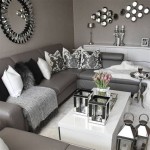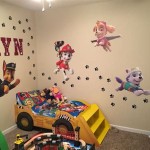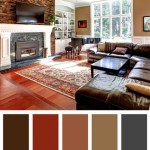How to Decorate a Table: A Comprehensive Guide
Table decoration elevates the dining experience, transforming an ordinary meal into a memorable occasion. Whether for a casual weeknight dinner or a formal celebration, thoughtful table decor enhances the ambiance, reflects personal style, and complements the food being served. A well-decorated table considers various elements, including linens, centerpieces, tableware, and lighting, all working in harmony to create a cohesive and inviting setting. This discussion will explore key considerations for effective table decoration.
Key Point 1: Linen Selection and Placement
Linens form the foundational layer of table decor, contributing significantly to the overall aesthetic. The selection of tablecloths, runners, placemats, and napkins should be carefully considered based on the occasion, the desired formality, and the existing decor. Fabric choice, color, and texture play crucial roles in setting the tone. For formal events, crisp white linen tablecloths and napkins often convey elegance and sophistication. In contrast, casual gatherings might benefit from colorful or patterned linens made from cotton or linen blends. The size of the linens is also important; a tablecloth should hang evenly on all sides, typically extending 10-12 inches beyond the table's edge.
Table runners offer versatility, adding a visual element that complements the tablecloth or provides contrast. Placed lengthwise down the center of the table, runners can define the space and create a focal point. They can be used on their own, particularly on attractive wooden tabletops or in more casual settings. Placemats, while primarily functional, also contribute to the aesthetic. They protect the table surface and delineate individual place settings. Choose placemats that coordinate with the tablecloth or runner, or opt for contrasting colors or textures for added visual interest. Napkins, essential for both functionality and decor, can be folded in various styles, ranging from simple rectangles to more elaborate designs, adding a touch of sophistication. Napkin rings can further enhance the presentation and coordinate with other elements of the table setting.
Beyond aesthetics, consider the practicality of the linens. Stain resistance and ease of care are important factors, especially for frequently used linens. High-quality linens, while potentially more expensive, often offer better durability and maintain their appearance over time. By paying careful attention to the selection and placement of linens, one can establish a strong foundation for a beautifully decorated table.
Key Point 2: Centerpiece Design and Execution
The centerpiece is often the focal point of the table, drawing the eye and setting the overall mood. The selection and arrangement of a centerpiece should complement the style of the event, the size of the table, and the surrounding decor. Centerpieces can range from simple floral arrangements to more elaborate displays incorporating candles, fruit, or other decorative objects. The height of the centerpiece is a crucial consideration; it should be low enough to allow guests to see each other across the table comfortably. Taller centerpieces are appropriate for larger tables or events where conversation is not the primary focus.
Floral arrangements are a classic choice for centerpieces, adding color, fragrance, and natural beauty. The type of flowers, the color palette, and the arrangement style should be carefully considered. Consider the season when selecting flowers; using seasonal blooms can often be more cost-effective and create a more natural look. Simple arrangements with a single type of flower can be just as impactful as elaborate displays with multiple varieties. Consider using greenery to add texture and visual interest. When arranging flowers, remember to remove any leaves that will be below the waterline to prevent bacterial growth and extend the life of the arrangement.
Alternatives to floral arrangements include candles, fruit displays, and collections of decorative objects. Candles create a warm and inviting ambiance, especially in the evening. Grouping candles of varying heights can add visual interest. Be sure to use appropriate candle holders to prevent dripping wax and ensure safety. Fruit displays can be both beautiful and functional, adding color and texture to the table. Seasonal fruits, such as apples, pears, or citrus fruits, can be arranged in bowls or platters. Collections of decorative objects, such as seashells, stones, or vintage items, can also create a unique and personalized centerpiece. Whether using flowers, candles, fruit, or other objects, the centerpiece should be carefully arranged to create a balanced and visually appealing focal point.
Key Point 3: Tableware and Place Setting Arrangement
Tableware includes plates, cutlery, glassware, and serving dishes, all of which contribute to the overall aesthetic of the table setting. The selection of tableware should complement the style of the event and the food being served. For formal events, fine china, silver cutlery, and crystal glassware are often used. For casual gatherings, more informal tableware made from stoneware or ceramic is appropriate. The color and design of the tableware should coordinate with the linens and the centerpiece. White tableware is a versatile choice that complements any decor. However, colorful or patterned tableware can add personality and visual interest.
The arrangement of the place setting follows established etiquette guidelines, which vary slightly depending on the formality of the event. In general, the dinner plate is placed in the center of the place setting. The cutlery is arranged around the plate, with the fork to the left, the knife to the right (with the blade facing the plate), and the spoon to the right of the knife. Salad forks are placed to the left of the dinner fork. Dessert spoons and forks are typically placed above the plate. Glasses are arranged to the upper right of the plate, with the water glass closest to the plate, followed by the wine glass(es). Napkins can be placed to the left of the fork, on the plate, or in a napkin ring. Place cards, if used, are typically placed above the plate or on the napkin.
Serving dishes should be chosen to complement the tableware and the food being served. Serving platters, bowls, and trays should be of appropriate size and shape for the dishes they will hold. Serving utensils should be chosen to coordinate with the cutlery. When arranging serving dishes on the table, consider the flow of the meal and the convenience of the guests. Place serving dishes within easy reach of all guests. Labeling dishes clearly can prevent confusion, especially at buffet-style meals. Attention to detail in the selection and arrangement of tableware enhances the dining experience and contributes to a well-decorated table.
Lighting plays a crucial role in setting the mood and enhancing the overall ambiance of the table setting. Natural light is always preferable, but additional lighting may be necessary, especially in the evening. Candles are a classic choice, creating a warm and inviting atmosphere. Dimmer switches can be used to adjust the intensity of the lighting. Overhead lighting should be soft and diffused to avoid harsh shadows. Consider using string lights or fairy lights to add a touch of whimsy. The type and intensity of the lighting should complement the style of the event and the desired mood. Proper lighting can transform an ordinary table setting into an enchanting dining experience.
Finally, personal touches can make a table setting truly special. Incorporating elements that reflect the host's personality or the theme of the event can add a unique and memorable touch. This might include using family heirlooms, displaying collections of favorite objects, or creating handmade decorations. Small details, such as handwritten place cards or personalized favors, can also make guests feel welcome and appreciated. The key is to create a table setting that reflects the host's style and creates a welcoming and enjoyable atmosphere for the guests. Careful attention to detail and a personal touch can elevate a table setting from ordinary to extraordinary.

Dining Room Table Decorations For Elegant Tables Premium Fabric Like Napkins

How To Decorate A Round Table

Vintage Inspired Pink Table Setting With Thrifted Finds And Blue Decor

How To Decorate Your Table For Dinner Wren Kitchens Blog

Easy And Thrifty Decorating Ideas For A Spring Table Diy Beautify Creating Beauty At Home

Ideas For Table Decor Settings M S Ie

Table Decorating Ideas On A Budget Thistlewood Farms

How To Decorate A Round Table For Thanksgiving Modern Glam

Creative Dollar Tree Table Decorations Ideas

The Basics Of Coffee Table Styling Shades Blue Interiors
Related Posts







